 "Upshift" (Upshift)
"Upshift" (Upshift)
03/30/2015 at 18:49 • Filed to: Personal Watercraft, review, yamaha, waverunner, fast, speed, racing, sport, VXR, 2013
 7
7
 11
11
 "Upshift" (Upshift)
"Upshift" (Upshift)
03/30/2015 at 18:49 • Filed to: Personal Watercraft, review, yamaha, waverunner, fast, speed, racing, sport, VXR, 2013 |  7 7
|  11 11 |
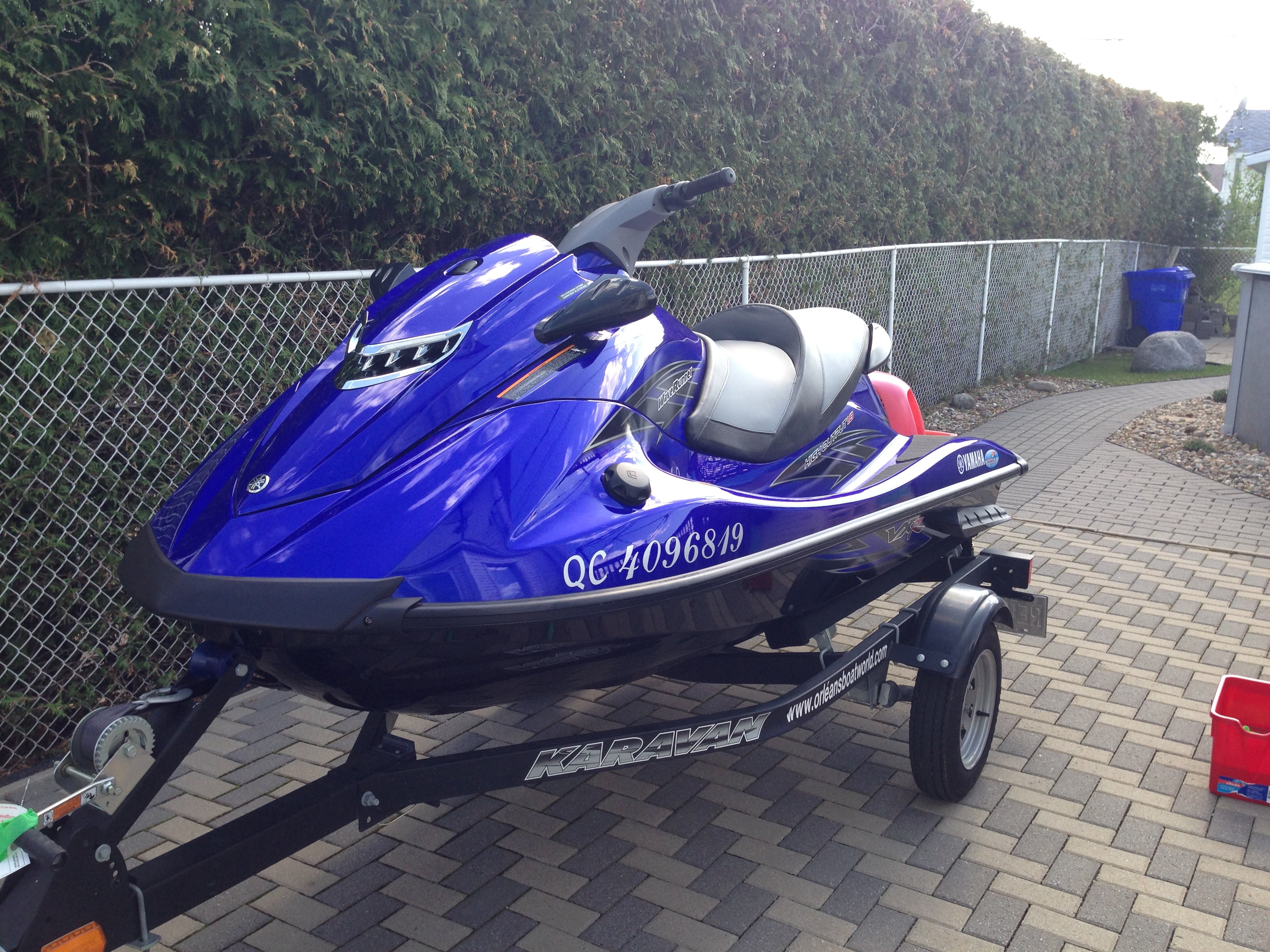
Originally introduced in 2011, the Yamaha VXR set to take the old Hot Rod tradition of stuffing the biggest engine in the lightest chassis and apply it to the water. At 1812cc, the engine is definitely the largest displacement powerplant in the industry. But, does Yamaha deliver the goods by doing this with their entry level VX hull?
Full Disclosure: The specific unit I'm reviewing is mine. Well, mine for another week or two and then it's getting replaced. I figured I would do a little write-up about it since it's going away. I will do my best to make this review as unbiased as possible.
Admittedly, the model is now 4 years old and was just revamped completely for 2015. However, the unit I was able to review is a 2013 model, because I own it and bought it 2 years ago. I just never got around to reviewing it.
So let's start with some basics. The VXR is essentially Yamaha's best-selling VX platform with a few tweaks to make it worthy of that added R. The main attraction is the fact that the 110hp 1052cc inline 4 from the regular VX is chucked out the window and replaced by another 4 cylinder engine, one that displaces a whopping 1812cc and produces 180hp. So, a massive bump in power.
Then, Yamaha get all Collin Chapman on us and scraps the regular Sheet Molding Compound(SMC) material they normally use for hull construction in favor of a new recipe they called NanoXcel which is much lighter than regular SMC construction and just as strong. The weight saved with the Nano material is actually significant. Enough that the VXR is 17lbs lighter than the regular VX despite the much heavier engine under the seat. Weight is also kept low by skimping on most luxury features. The only concessions to modernity are a mechanical reverse lever and a reboarding step at the stern.
Now let's see how this all stacks up.
Exterior: 6/10
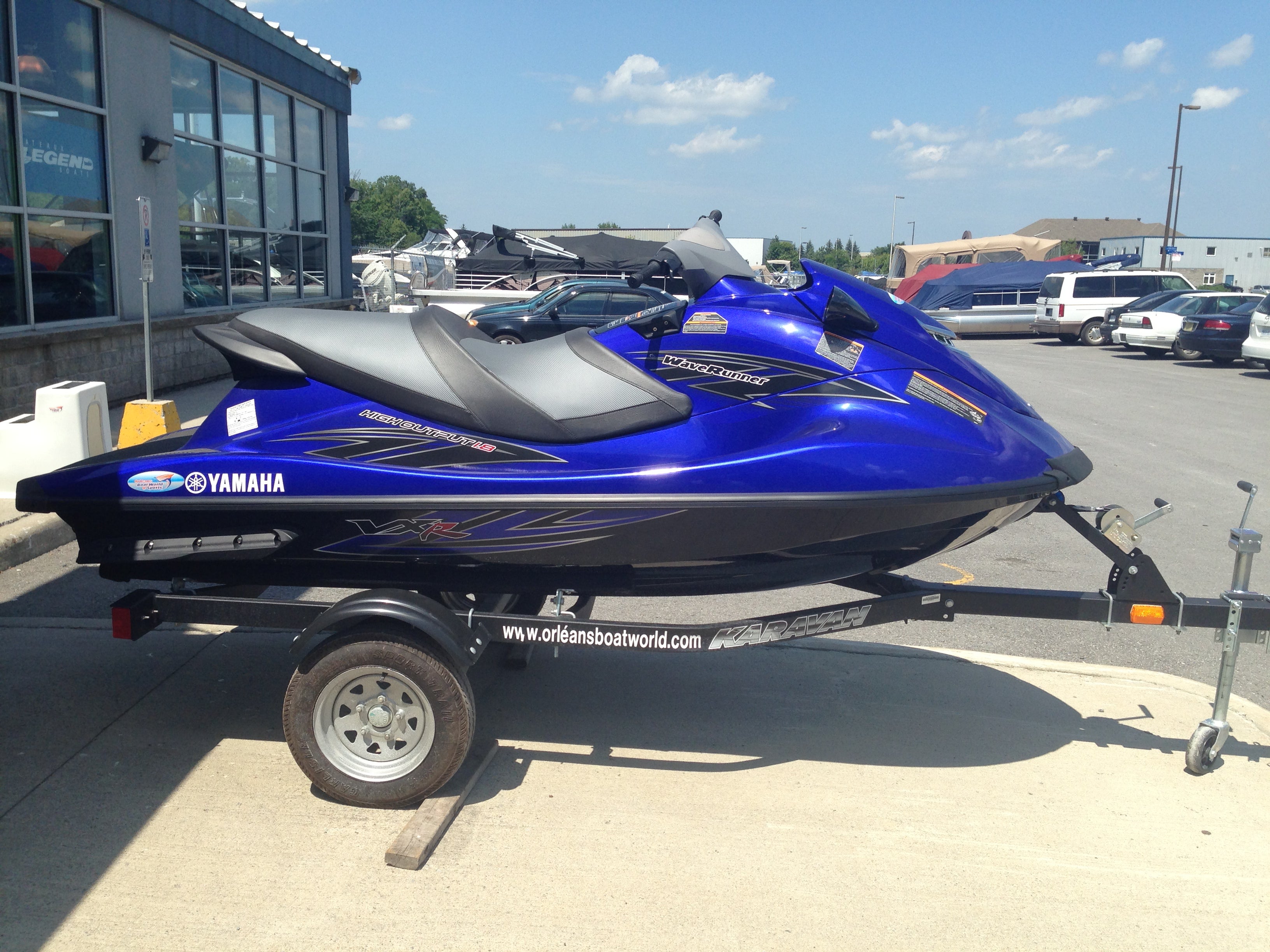
In my opinion, the saving grace is the Yamaha Racing Blue paint of the deck over the black hull. It's a sporty and striking color that compliments the hard, racy styling cues of the front of the craft. Overall though, I feel a bit mixed on the design. It does look like a fast sports-craft and looks pretty good. But, the styling is very dated, especially compared to contemporaries from BRP which, in my opinion, absolutely murder the rest of the industry in terms of looks. But you know, it's not bad at all and does show off the craft's intentions. The chrome "inlet" on the "hood" is pretty tacky however. Again, the paint scheme gives it bonus points.
Deck(because PWCs have no interiors): 4/10
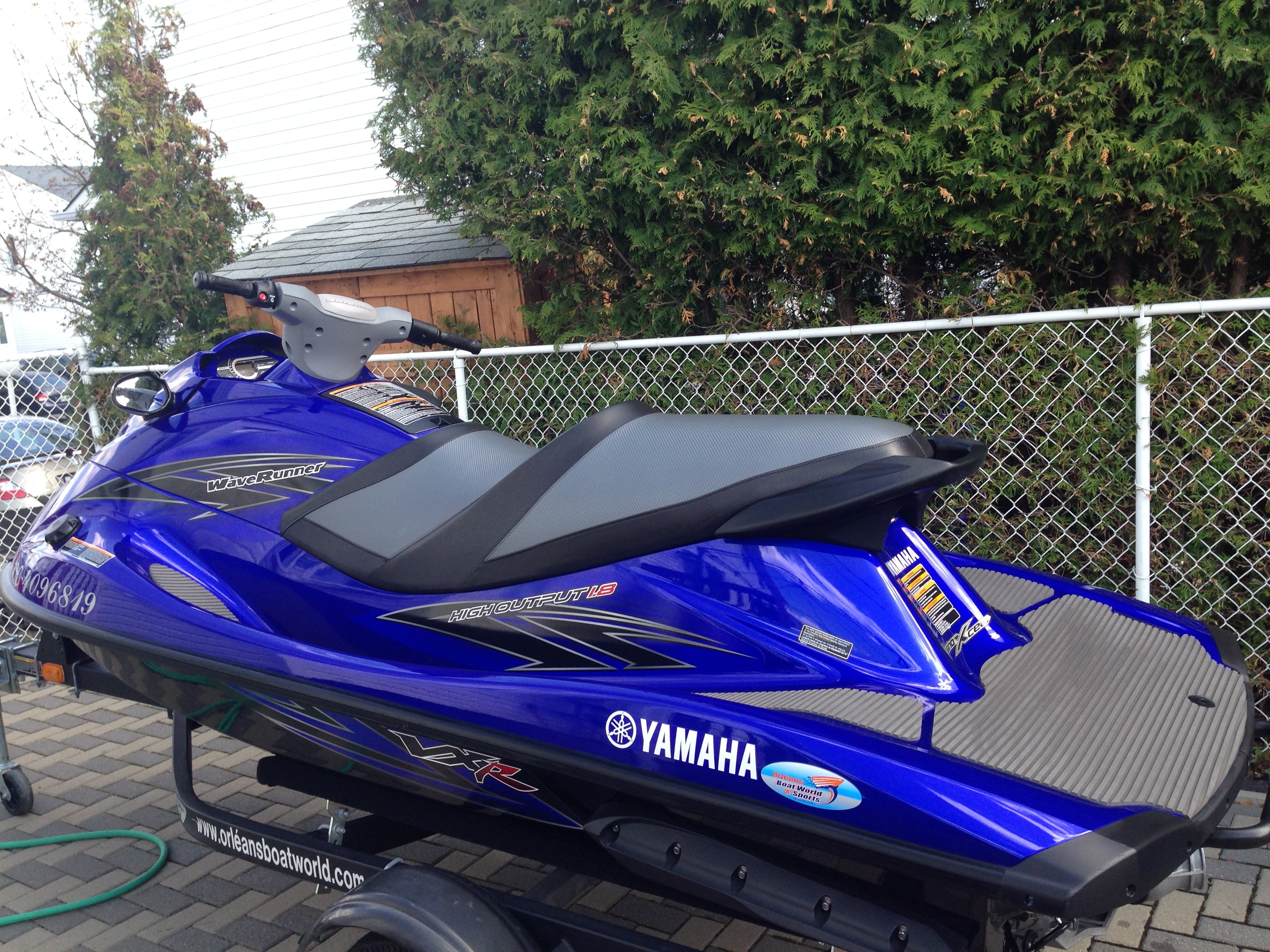
What to say about the deck? It's simple and generic. From the single tone gray Hydr-turf traction mats, to the digital display that shows total hours, fuel, speed and RPM only to boring steering unit with rounded grips. It's as generic as generic gets. The grips are uncomfortable for longer or aggressive rides and I've had the Yamaha logo embedded into my palms more times than I care to remember. The racing-style bucket seat is amazing for the driver and really keeps you in place no matter how hard you ride the thing, so long as your arms can hold on. However, the same seat is utterly useless at keeping a passenger in place on anything other than relaxed riding on glass-calm water. Storage is about average with a little over 15 gallons combined between the bow-storage under the hood and the small glove box between your crotch and steering rack. The glove box does have a foam block with cutouts designed to hold two bottles/cans so it's pretty practical. Here's a shot of the bow storage compartment with a bunch of essentials thrown-in for scale:
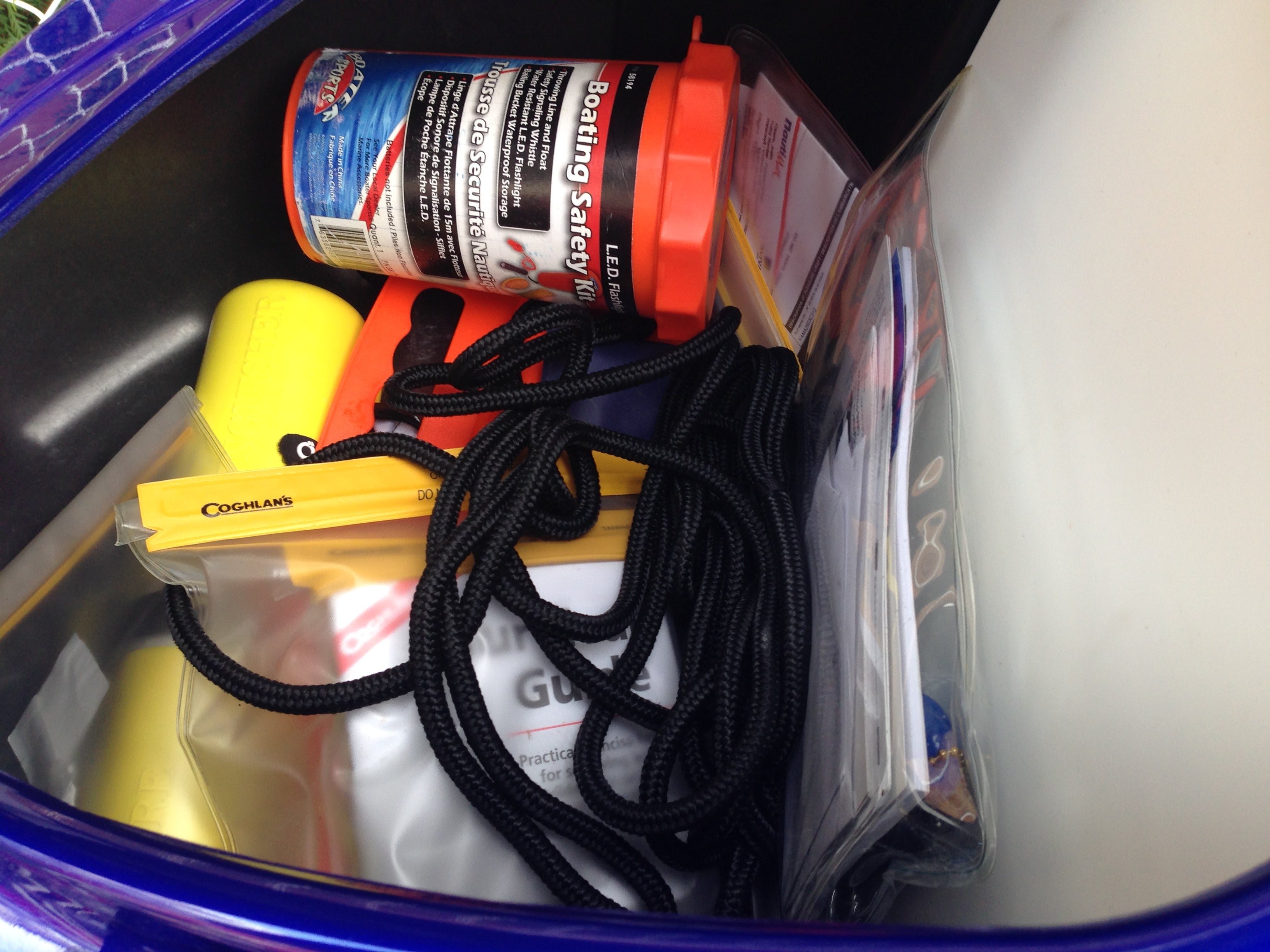
Acceleration: 8/10
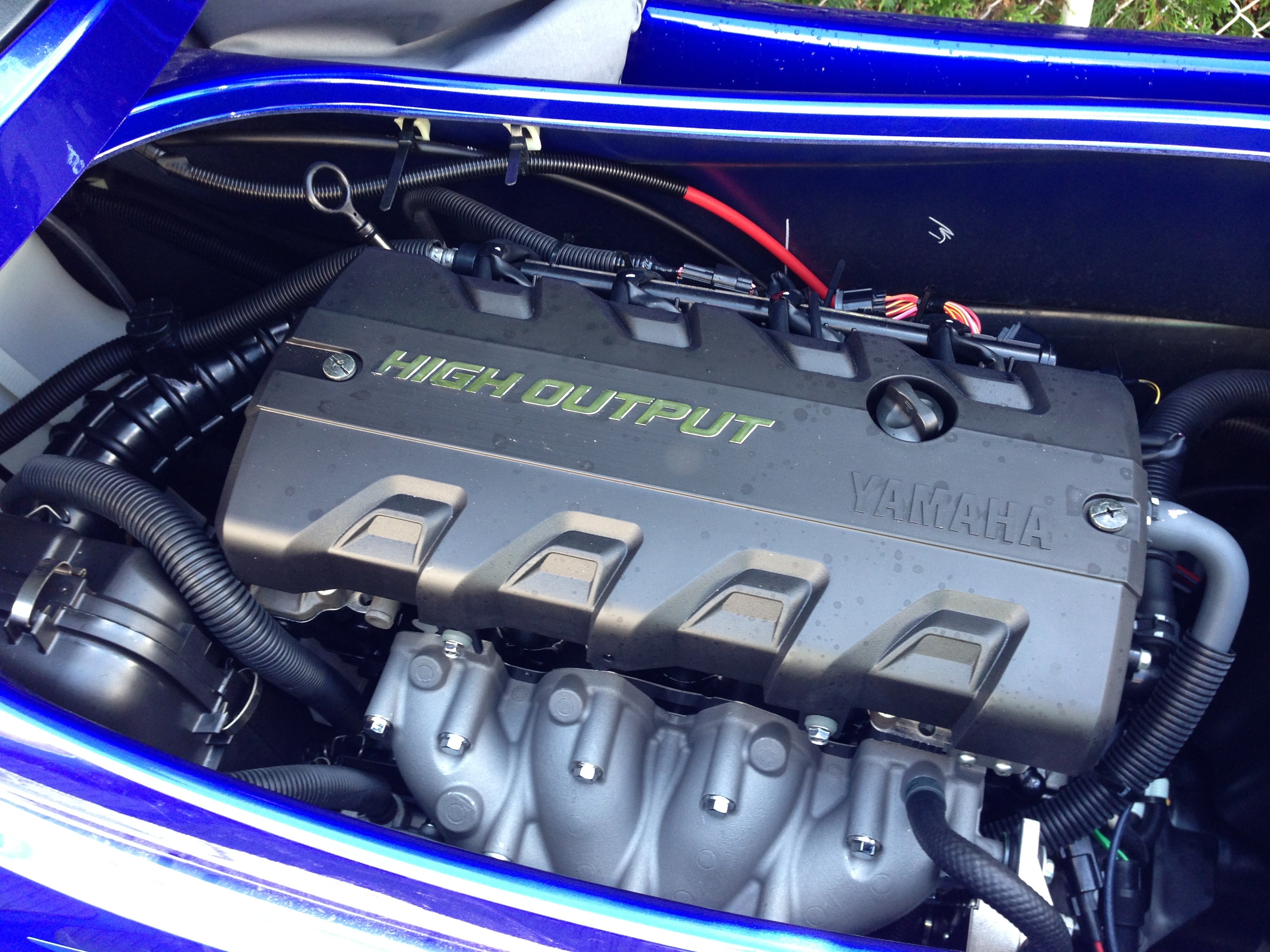
Power to weight ratio is a beautiful thing when it's done right and this is where the little Yamaha shines! In a world of 210-310hp monster craft's, 180hp may not seem like much but, when paired to a craft that is at least 100lbs lighter than the next lightest performance machine, means you will never be disappointed. 0-30 mph is dispatched in an eye-watering 1.8 seconds and top speed lands somewhere between 65 and 70mph. Acceleration is right on the tail of some of the beastiest watercraft on the market and the top speed is definitely in flagship territory. To anyone new to boating, going over 60mph on water is both an impressive performance feat and a test of fortitude as you're pretty close to the surface and in a wide-open setting much like a motorcycle. If you fall off, that water will hurt you like hitting concrete. The engine is a real peach with power and torque all over the range. Individual throttle-bodies also means throttle-response is as instantaneous as it gets: Punch the throttle from a stand-still and the engine immediately spins to a hair under it's 8000rpm redline as the 155mm jet pump struggles to displace water fast enough to get you going (Think doing a bit of a burnout while launching a car). Cruising at 50mph and you suddenly come across a glass-smooth, extra long stretch? Punch the throttle and prepare to catch your jaw because your arms are going to get stretched hard, even at that higher speed. It's addictive.
Ride: 2/10
There's no way to sugar coat it. On anything other than glass-smooth lake water, the ride on this thing is brutal and punishing. The padding on the seat will save your spine on mild chop but otherwise, it feels like riding a racecar on Quebec roads. There are a few reasons for this. First and foremost, the craft only measures 128 inches which is short for a modern craft. Hull length has a big impact on how any boat will handle choppy water. The second and equally damning culprit is the hull design. Being from the VX line, the overall shape of the hull from the shape of the V to the design of the chines are a compromise to be a bit of everything for everyone. Think of it as the chassis of a budget, generic compact that's made to just get the job done and appeal to the masses. So, the craft doesn't cut through chop all that well and is really not meant for cruising on rivers. The final nails in the ride coffin are the lack of trim and telescopic/tilt steering. The former allows you to adjust the attack angle of the hull to suit the type of riding and conditions you will encounter by either placing the nose of the watercraft higher up or lower when at planing speed. The latter feature, if it were present, would allow the rider to more comfortably stand up for long periods of time, using his legs as shock absorbers to alleviate the punishment on his upper body. Without adjustable steering though, you're stuck in a very uncomfortable crouch position when trying to stand up.
Handling: 8/10
Despite the shortcomings of the VX hull, the sponsons sit at a different height on the VXR. This makes for a much, much more nimble ride than the regular VX. The VXR easily pulls off racecraft-like corners so long as the driver is skilled enough and has a strong upper-body. Unlike the GTi series from BRP and older watercraft designs in general, all modern Yamahas feature handling that is on rails rather than playful and "drifty". You won't get that craft to slide it's read end at all. It will, however, turn as hard as you can hold on and, try as I might, I have never gotten the thing to capsize. Like practically all watercraft nowadays, the VXR reacts positively to an intuitive inside lean when turning, in the same vein as a motorcycle. There is, however, a hint of old-school in the turning behavior of this beast: When turning, putting your outside foot on the stern of the deck and applying a good portion of your weight to that foot helps lock in the craft on cornering even better than just going for that inside lean. The only demerit, which is likely attributed to the budget VX hull design, is the fact that cornering at speeds above 50-55 mph can be extremely sketchy as the craft no longer seems to "grip" onto the water's surface, with the stern starting to drift instead. It can be very unnerving.
Toys: 3/10
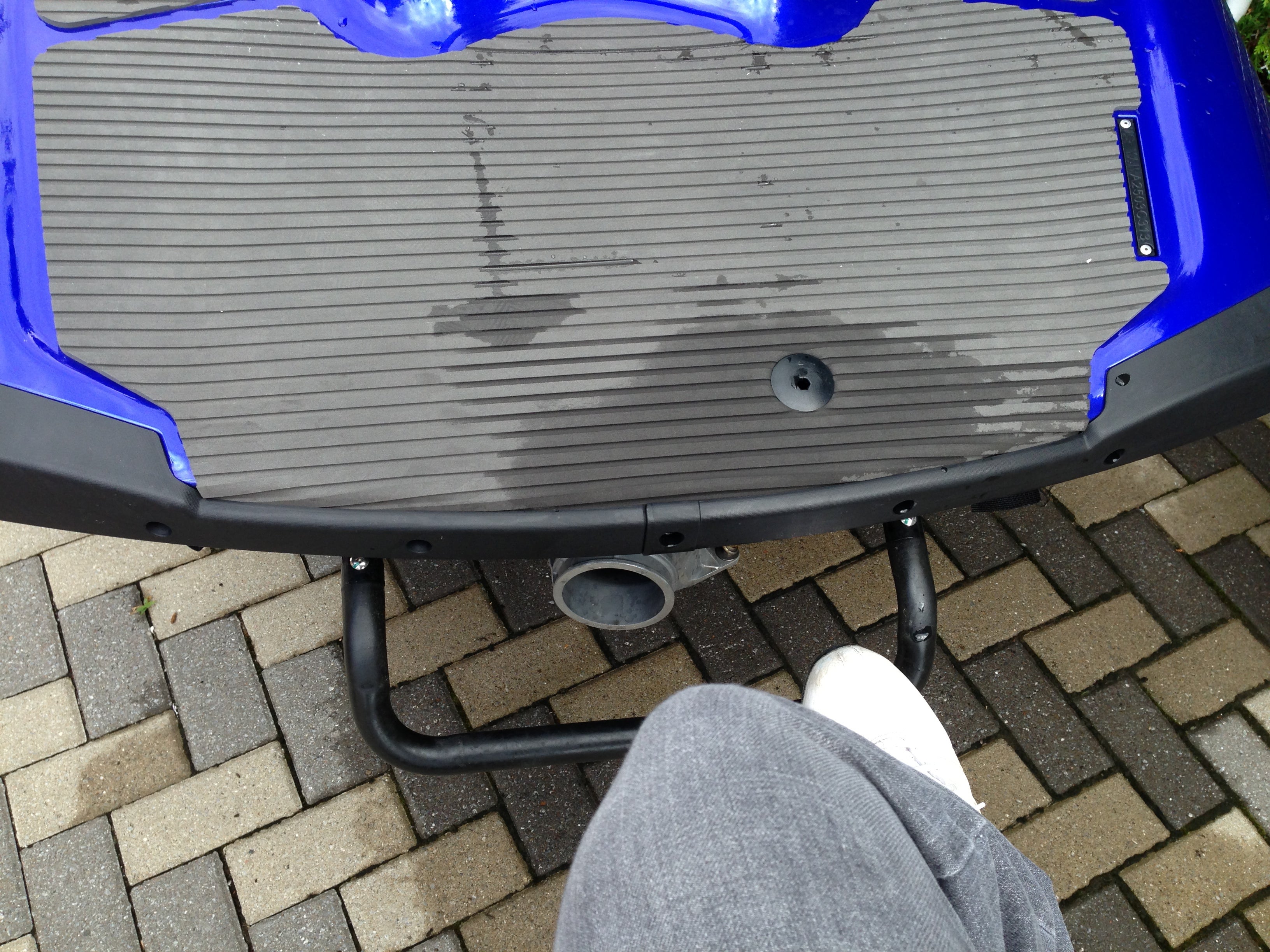
The list of extra features are very barren. You have the digital instrumentation that only shows hours, fuel level, RPM and speed with engine warning lights and icons and that's it. Otherwise, you have a reboarding step at the back and it's rather shallow. You get no trim, no tilt or telescopic steering, no fancy on-the-fly performance modes other than being able to set it to low-rpm when the engine is off, no cruise-assist or no wake mode and reverse is a mechanical lever, on the same side as your throttle trigger so you have to get fancy with your hand work. It's essentially the lotus of the PWC world: Simplify and add lightness. It's all good and fine if you just want to play around in a lake but, for everything else, it's crummy.
Overall, the VXR is a massively fun machine that perfectly embodies the whole Hot Rod mantra and would make Collin Chapman proud. It's fast, handles great and is extremely simple. However, comfort and luxury are sacrificially slaughtered at the altar of performance more than any other craft on the market. You should weigh all the pros and cons according to what you intend to do with your next machine before you pull the trigger.
 yamahog
> Upshift
yamahog
> Upshift
03/30/2015 at 18:55 |
|
Good stuff! If you don't mind me asking, how much does one of these run in comparison to the competition?
 CB
> Upshift
CB
> Upshift
03/30/2015 at 18:59 |
|
Good review! And I don't think most things on the water will rank high on the comfort scale.
Source: spent my childhood riding on the bow of an twenty-foot Boston Whaler. Not comfortable, especially in storms.
 Upshift
> yamahog
Upshift
> yamahog
03/30/2015 at 19:01 |
|
Crap, I knew I was forgetting something! A new 2015 VXR is $11,799 USD and I believe were just a hair over $11k upon introduction. Kawasaki does not have a direct competitor to this model. BRP's closest model is the GTR 215 is 11,899$ and has 215hp thanks to a supercharged 1.5L Rotax motor. However the SC requires regular maintenance and the craft is much heavier.
 Upshift
> CB
Upshift
> CB
03/30/2015 at 19:26 |
|
You would be surprised what a difference an extra foot of length, proper hull design and trim can do for a watercraft's ability to handle chop. There's a reason most offshore racers prefer Yamaha FX series and Kawasaki Ultras (and nobody ever uses the VxR).
 E. Julius
> Upshift
E. Julius
> Upshift
03/30/2015 at 19:44 |
|
To anyone new to boating, going over 60mph on water is both an impressive performance feat and a test of fortitude as you're pretty close to the surface and in a wide-open setting much like a motorcycle. If you fall off, that water will hurt you like hitting concrete.
Can confirm.
 WhiskeyGolf
> Upshift
WhiskeyGolf
> Upshift
03/30/2015 at 20:02 |
|
I like this trend of reviewing everything Jalop! Boats are one of my biggest hobbies, so I think I'll do a review of my family's 17ft bowrider later this year...
 Upshift
> E. Julius
Upshift
> E. Julius
03/30/2015 at 23:12 |
|
Morbid curiosity, tell me more!
 Upshift
> WhiskeyGolf
Upshift
> WhiskeyGolf
03/30/2015 at 23:13 |
|
Do it! I'll definitely read as larger boats aren't a specialty of mine and I want to learn!
 E. Julius
> Upshift
E. Julius
> Upshift
03/31/2015 at 02:50 |
|
Probably the stupidest possible scenario: I was with two friends on a Seadoo jet boat owned by one of the friend's parents. The other friend and I made a game of jumping off the boat at higher and higher speeds. Honestly we topped out at like 30-35 mph, and that was extremely unpleasant. I can't even imagine what 60 would be like.
 Upshift
> E. Julius
Upshift
> E. Julius
03/31/2015 at 10:08 |
|
Oh god. Stupid yes but, that's hillarious. Kids, don't try this at home! Hahaha
 E. Julius
> Upshift
E. Julius
> Upshift
03/31/2015 at 10:19 |
|
I won't say it wasn't fun at the time haha